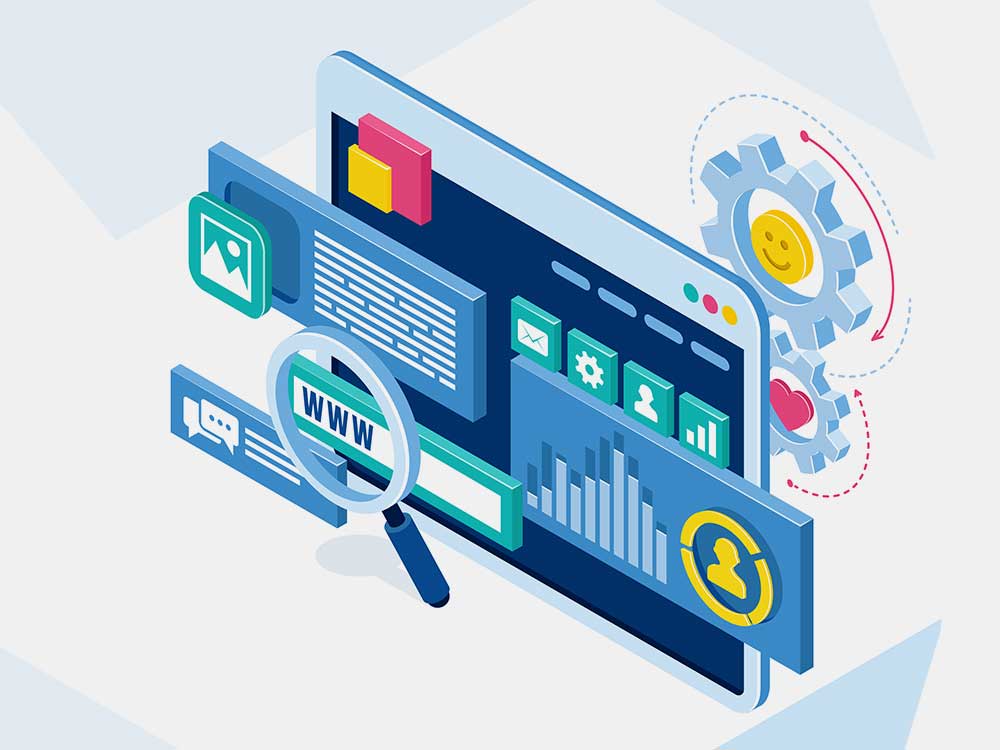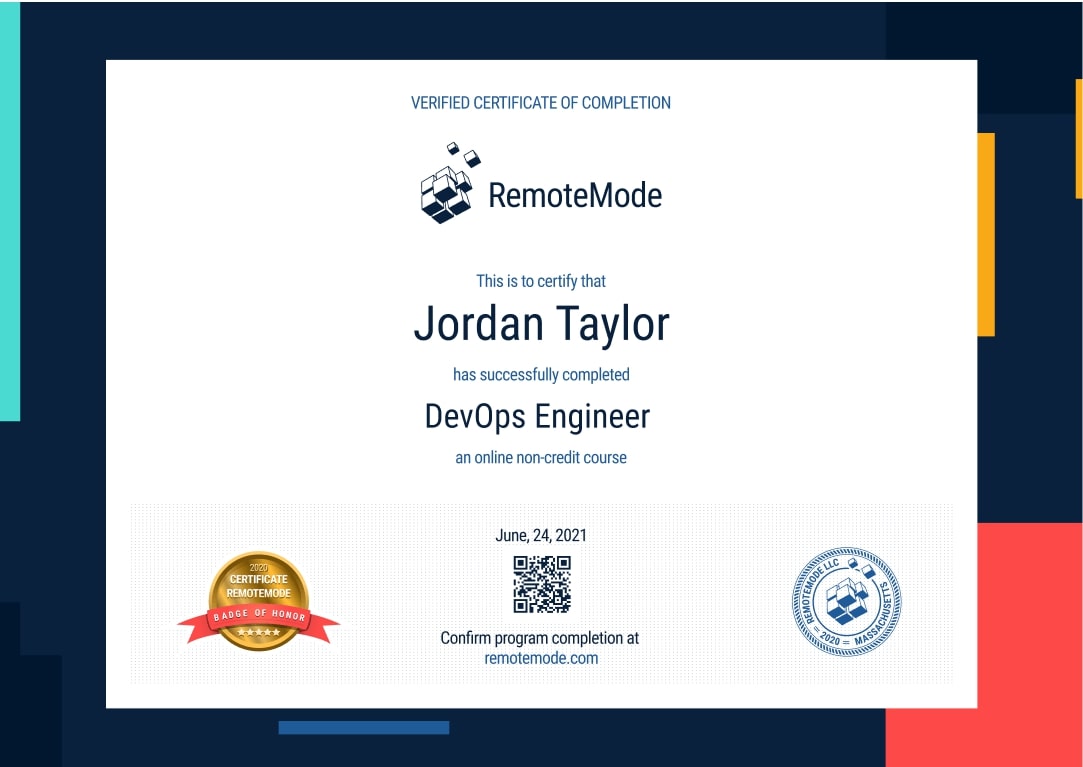Become a Help Desk Engineer
Help Desk Engineers provide comprehensive technical support for their company and the clients of their company. A Help Desk Engineer is someone who has an expansive knowledge of a wide range of different programs and applications. These specialists are responsible for maintaining a working knowledge of relevant programs and being able to communicate solutions to issues remotely.
It is essential to have Help Desk Engineers on call in nearly all businesses based in tech. Help Desk Engineers are critical for keeping businesses running smoothly and programs running continuously.
- 9-month long course
- 339 specialized lessons
- 6 hours per week
- 240 hours in total



Mission Forecast for Help Desk Engineers
Landing Zone
The main task of Help Desk Engineers is to organize technical help for non-IT computer users. Specificity allows them to work with the users in person or remotely utilizing video or phone. They are masters of troubleshooting and solve a wide range of problems, from simple questions about basic applications to complex errors affecting servers and networks. While some may work for large software companies or support service firms, others work in call centers. Today, over 844,600 Help Desk Engineers are employed. By 2030, that number will increase to almost 949,000 jobs.
Mission Objective (Who’s Hiring Right Now)
Help Desk Engineer Overview
The U.S. Bureau of Labor Statistics estimates that this profession will see an above-average increase in jobs - 9% in the next ten years.
- + 9-month long course
- + 6 hours a week - at your own pace
- + 339 on-demand lessons
- + 240 hours of learning materials
- + Receive a certification confirming your training
- + Participate in real-life Virtual Lab Projects
- Learn how to use and communicate your knowledge about technical systems.
- Write training manuals.
- Troubleshoot on the phone or in person.
- Walk customers through how to solve their technical issues.
- Setup, maintain and configure systems as needed.
Prepare for Liftoff
Microsoft Word 2019
This lesson introduces Microsoft Word 2019 to the learners of the course with the aim of recommending the application as a fitting tool for creating documents and other textual records.
Part 1 of 4: Get Acquainted with the Environment
The discussion details the basic functions of the 2019 version of Microsoft Word and the various tasks that can be undertaken by the Project Manager through it to increase productivity.
Part 2 of 4: Selecting, Searching and Formatting
This lesson will go into the functions and processes of Selecting, Searching, and Formatting in Microsoft Word 2019.
- Selecting
This segment of the lesson discusses how the user can select parts of a text or the entirety of it within an MS Word document. The discussion details the command that can be executed to perform the function or the shortcut to it within the electronic interface.
- Searching
This segment goes into the details of how a user can find a specific text in a document. As with the previous segment, this walks the user through the command and the shortcut that accesses the Search function.
- Formatting
This segment discusses the different formatting functions for texts, paragraphs, and headings that can easily be found and executed through MS Word's toolbar. These formatting functions can be administered on the following aspects:
3.1. Characters
3.2. Paragraphs
3.3. Sections
This segment also discusses the keyboard shortcuts that may be used to access these functions.
Part 3 of 4: Tables and Objects
This lesson is divided into two (2) functions from Microsoft Word 2019 namely, Tables and Objects.
- Tables
This segment discusses how users would be able to create tables on a Word document through four (4) ways:
1.1. Inserting a pre-set table
1.2. Customizing a table
1.3. Drawing a table
1.4. Converting a Text into a table
- Objects
This segment discusses how one can insert and draw graphics on a Word Document. This tackles how these functions can be accessed through the Insert tab on the MS Word's toolbar. These objects are defined through the different graphic types:
2.1. Pictures (from the user's computer)
2.2. Online Pictures
2.3. Shapes
2.4. SmartArt
2.5. Screenshot
This segment will also walk users through the process of deleting these objects from the Word document.
Part 4 of 4: Labels, Page Layout and Printing
This lesson discusses three (3) Microsoft Word 2019 functions in segments namely, Labels, Page Layout, and Printing.
- Labels
This segment details how a user can create a sheet of labels like return address labels and single label in MS Word's Print section. This enumerates the seven (7) steps that the user should undertake to do so.
- Page Layout
This segment discusses how one can change the Page Setup of a Word document. This comprises the following functions found on the Layout tab of Word's toolbar:
2.1. Margins
2.2. Orientation
2.3. Size
2.4. Columns
- Printing
This segment details how a user can go about printing a Word document through MS Word's 2019 version. This goes into the 3-step process that allows one to access the function with its multiple settings.

Mission Control
- Stay focused with a mentor’s help and support
- Build a real portfolio with Virtual Lab Projects
- Compete with classmates in a virtual classroom
- Measure your progress with the Activity Tracking Log
- Make sure you get the job with resume help and interview assistance
In Collaboration with
Chart Your Trajectory
- CompTIA A+ Certification22 videos
- CompTIA NET+ Certification17 videos
- CompTIA Net+ Cert 007 Update19 videos
- Microsoft Outlook 201934 videos
- Microsoft Excel 201936 videos
- Microsoft Excel 2019. Data Analysis23 videos
- Microsoft Word 201942 videos
- Microsoft PowerPoint 201927 videos
- Microsoft Teams34 videos
Certificate of Completion
- Receive a certificate recognized by prevalent companies confirming your training
- Complete real projects in Virtual Labs
- Go at your own pace, learn your way
- Access course videos and materials 24 hours a day
- Take practical quizzes to keep you up to speed
- Classes created and mentored by industry leaders

Grow into a Help Desk Engineer
Support the industry in ways only you can. Learn how basic systems work on a specialized level to help streamline the tech industry into the next generation.
Program Forecast
- 9 months long, 6 hours per week
- 339 lessons in 240 hours
- Learn at your own pace
Virtual Lab
- Real Projects
- Create a working portfolio
- Receive expert feedback and mentoring
Career Services
- Interview preparation
- Resumé assistance
- Help with LinkedIn networking
Request More Information
View pricing and financing options